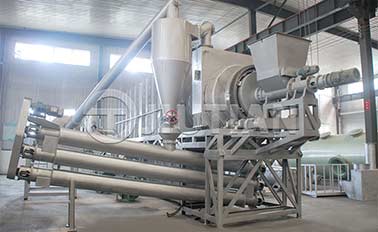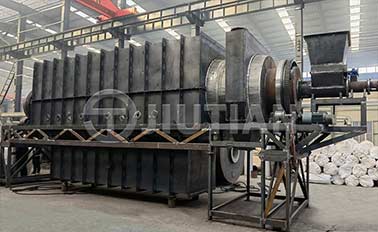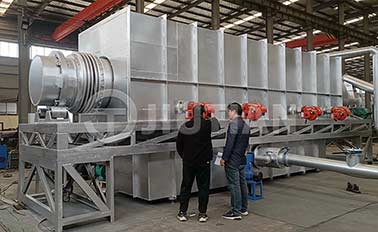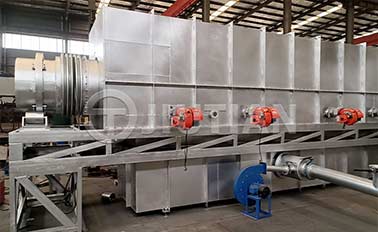1. High-temperature cooking carbonization method:
This is the most common and widely used bamboo carbonization method. By placing bamboo in a closed high-pressure container, passing steam and heating to a certain temperature (usually between 200°C and 300°C, but the specific temperature may vary depending on the process and equipment), the bamboo is kept for a period of time to undergo a chemical reaction under high temperature and pressure, and a hard carbonized layer is formed on the surface. This method not only increases the hardness and stability of bamboo, but also gives it a unique color and texture.
2. Dry distillation carbonization method:
Dry distillation carbonization is a process that decomposes organic matter in bamboo at high temperatures to produce gas, liquid and solid residues. In this method, bamboo is placed in an oxygen-free or low-oxygen environment and heated to a high temperature (usually much higher than the temperature of the cooking carbonization method) to pyrolyze components such as cellulose, hemicellulose and lignin in the bamboo to produce carbonaceous residues. This method is usually used to produce bamboo charcoal, rather than directly used for carbonization of bamboo to improve its physical properties.
3. Surface carbonization method:
Surface carbonization method is a method of forming a carbonized layer only on the surface of bamboo by local heating or spraying chemical reagents. This method can accurately control the thickness and position of the carbonized layer and is suitable for application scenarios where the original characteristics of the bamboo need to be maintained. For example, the bamboo surface can be locally heated using tools such as flame guns and lasers, or a solution containing a carbonization accelerator can be sprayed and then heated.
4. Natural carbonization method:
The natural carbonization method is a relatively primitive and time-consuming method, which is to expose the bamboo to the natural environment and gradually carbonize the bamboo surface after a long period of exposure to natural factors such as sun, rain, wind and rain. Although this method is environmentally friendly and does not require additional energy, the carbonization effect is unstable and difficult to control, so it is relatively rare in practical applications.
It should be noted that different carbonization methods will have different effects on the physical properties, color, texture and other aspects of bamboo. Therefore, when choosing a carbonization method, it needs to be determined according to the specific application requirements and process requirements. At the same time, parameters such as temperature and time need to be strictly controlled during the carbonization process to ensure the consistency and stability of the carbonization effect.
If you need to know about bamboo carbonization equipment, please contact Jiutian Machinery. Jiutian Machinery will provide you with a complete production line solution!





